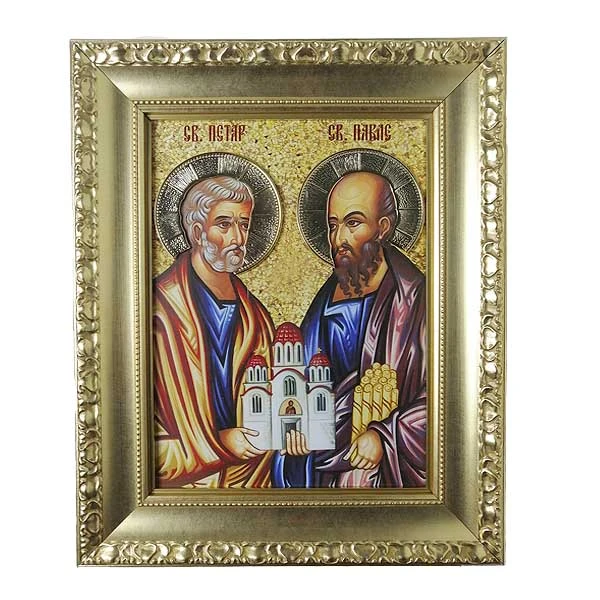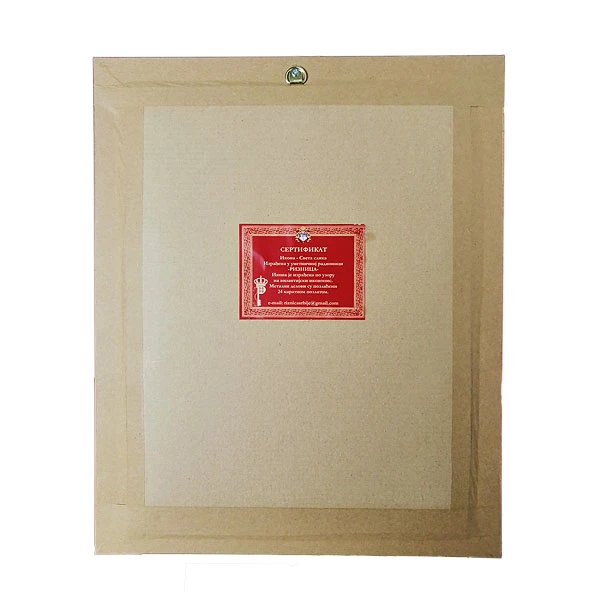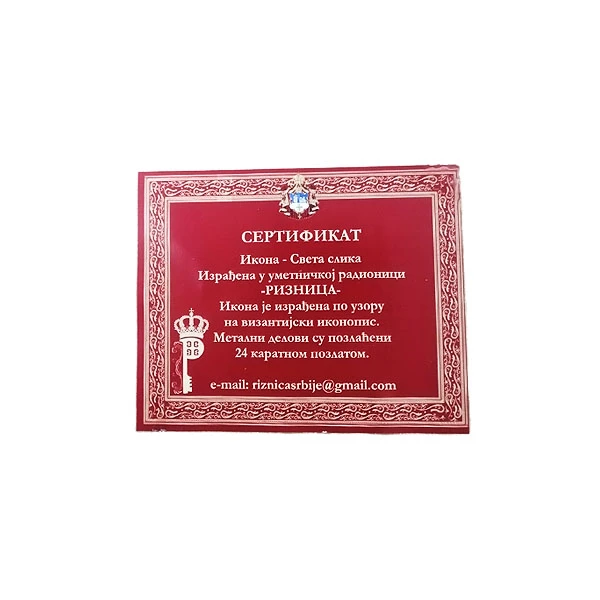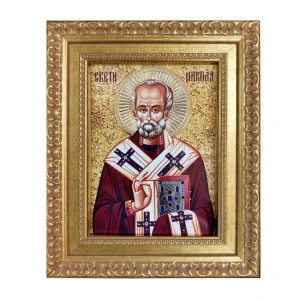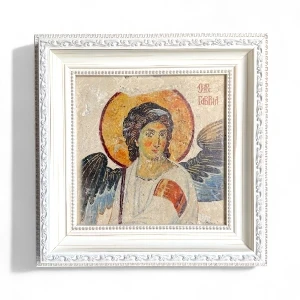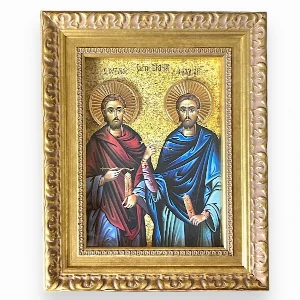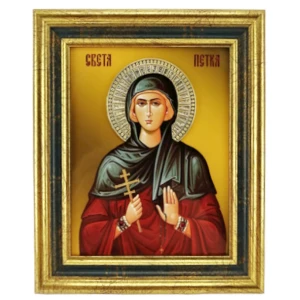- Home
- Orthodox Religious Products
- Icons
- SLAVA ICON OF SAINT PETER AND PAUL 41x33
SLAVA ICON OF SAINT PETER AND PAUL 41x33
Šifra: E-146-34
Brand: Riznica nacionalnog blaga
Icon of the Saints Peter and Paul. The metal parts of this icon are gilded with 24-karat gold, which is the finest and purest gold on the market.
The icon is modeled on Byzantine icon painting. Byzantine icon paintings are the oldest and most detailed icon paintings in the history of Christianity, which means that this icon contains everything, even the smallest details, which were passed down from generation to generation by icon painters since ancient times.
An icon that will decorate the wall of your home and glorify the saint who is the guardian of your home. Make your home more beautiful, and fame more cheerful! In addition to the celebratory purpose, you can also give it to someone as a benevolent gift and protection for the family to whom it is presented.
DETALJNIJE
- Icon is in a frame, without glass
- Dimensions: 41x33 cm
- It contains a certificate of the National Treasure Treasury
- 24 carat gold plating of metal parts
- The icons are not sanctified!
According to Christianity, the icon should be kept on the east wall of the house!
Petrovdan is a holiday when Peter and Paul are celebrated, because they died on the same day, a church and national holiday dedicated to the holy apostles Peter and Paul, which is celebrated on June 29 according to the Julian calendar (July 12 according to the Gregorian calendar). St. Peter's Day is one of the 15 greatest Christian holidays and is dedicated to the holy apostles Peter and Paul, the first preachers of Christianity and the closest disciples of Jesus Christ.
Among the Serbs, there is a custom to light lilas, which are made from the young bark of a wild cherry or birch tree, on the eve of this great holiday. It is usually done in places where people gather, in squares, intersections, and children and youth participate in it. The burning of fire and lilac symbolizes the times when the Christian emperors persecuted and tortured Christians, tying them to wooden posts, soaking them in resin and burning them. Their bodies then burned like flames, lighting up the squares like today's symbolic fires and flames.
Recommended
Related products

Apply for newsletter
Sign up for the Serbianshop newsletter and get a 10% discount.


